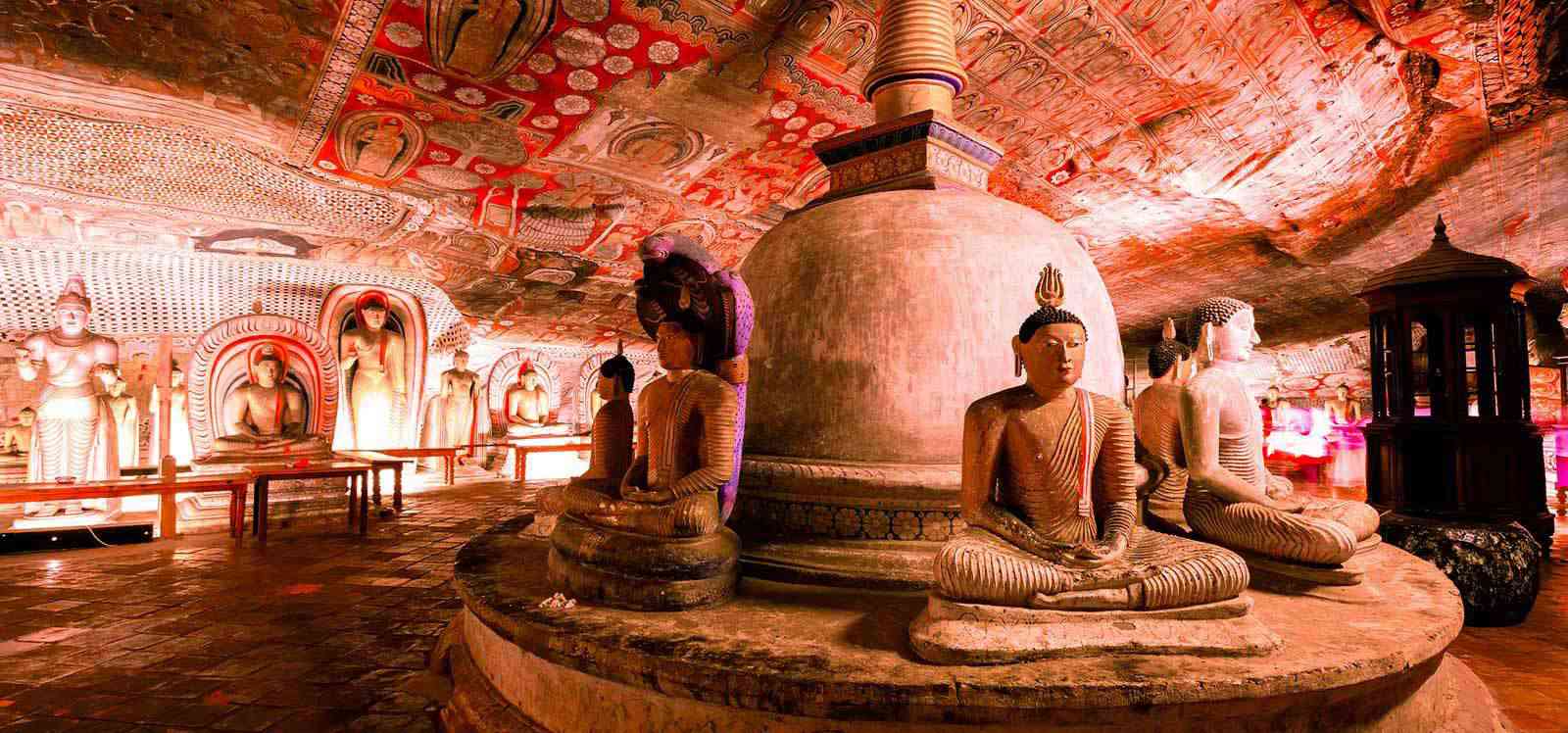DAMBULLA
Dambulla is a town located 148 km (92 miles) north-east of Colombo and 72 km (45 miles) south of Kandy, in the Matale, central province of Sri Lanka. It is the center of vegetable production in the country due to its place at a main intersection. The area’s main attractions include Sri Lanka’s biggest and best preserved cave temple complex and the Rangiri Dambulla International Stadium, renowned for being constructed in just 167 days.
The region also boasts the biggest rose quartz mountain range in South Asia, and the Iron wood forest, or Na Uyana Aranya. Ibbankatuwa prehistoric burial site near Dambulla cave temple complexes is the newest archeological site of important historical significance discovered in Dambulla, which is situated within 3 km (1.9 miles) of the cave temples offering proof of the existence of indigenous civilization.
ATTRACTIONS IN DAMBULLA

DAMBULLA CAVE TEMPLE
Dambulla cave temple also known as Dambulla Golden Temple, is a Sri Lankan World Heritage Site (1991), located in the country’s central portion. The site is 148 km (92 mi) east of Colombo and 72 km (45 mi) north of Kandy.
Dambulla is the biggest and best preserved temple cave complex in Sri Lanka. The rock towers 160 m above the surrounding plains.
In the surrounding region there are over 80 documented caves. Major attractions spread across five caves containing statues and paintings. Gautama Buddha and his life are related to these paintings and statues. There are a total of 153 Buddha statues, three Sri Lankan king sculptures, and four god and goddess statues. Vishnu and the Ganesha are among the latter. The walls cover 2,100 square meters (23,000 square ft). Depictions on the cave walls include the demon Mara's temptation and the first sermon of Buddha.
Before the arrival of Buddhism in Sri Lanka, prehistoric Sri Lankans would have lived in these cave complexes as there are burial sites with human skeletons about 2700 years ancient in this region, close the Dambulla cave complexes in Ibbankatuwa.

KANDALAMA LAKE
The Kandalama lake was praised as the most beautiful lake in Sri Lanka as well as a wonderful feat of engineering, an enormous man-made reservoir constructed and expanded by the ancient kings of Ceylon. At 4.8 km (3mi) long and 2.3 km (1.4mi) broad, with a 102sq km (39.4sq mi) catchment region, it contains 33 million cubic meters of water used to irrigate the surrounding countryside, especially the paddy fields.
The tank was created by a dam 69 ft (21 m) high and 5,200 ft (1,600 m) which, according to a British chronicler, Charles Pridham, "is formed with large hewn stone masses, confronted with rocks eight or ten feet thick at the base, positioned like steps and laid in periodic layers to move which by pure physical force must have needed the joint labor of thousands." In 1821, British Ceylon's John Davy wrote: “The lake of Kandalama is best example of the kind of work, that I have ever seen.”
